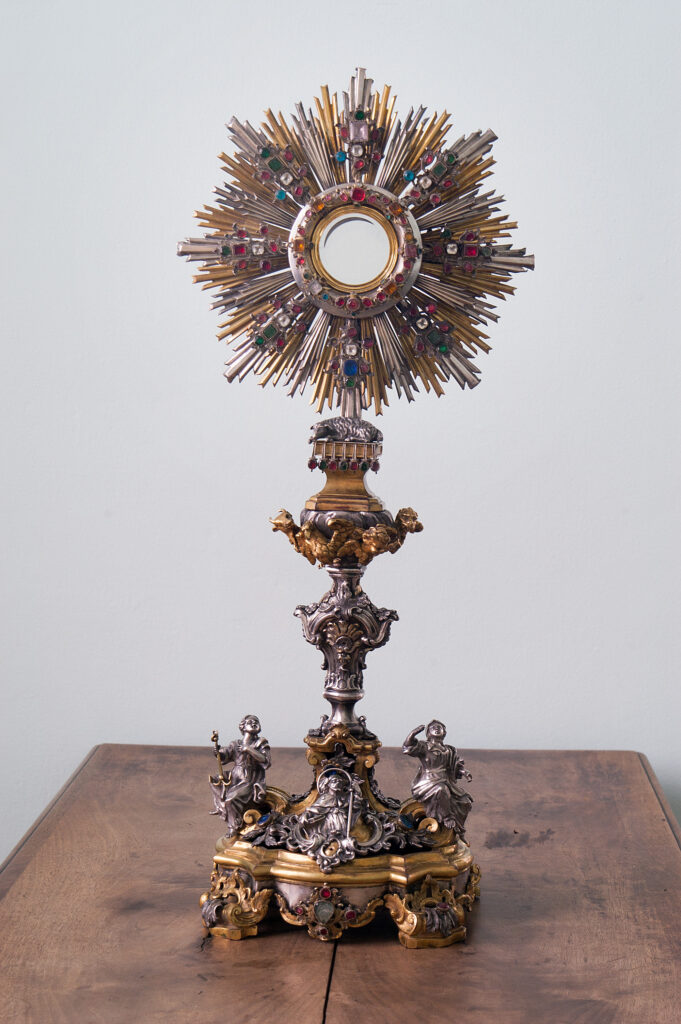
Author: Messinese Silversmith (sec. XVII – XIX)
Date: 1795
Material: Silver embossed, chiseled and polished, gold parts on fire and cast, colored crystals
Dimensions: cm 69x39x26
Stamps: Mark of the Messina Mint, F.S., 95
Location: Milazzo, church of the Madonna del Carmine
The artifact is distinguished by a discreet executive finesse and by typological prerogatives widespread in the monumental monstrances made at the end of the eighteenth century. The pleasant sun monstrance has a circular section foot with concave convex profile mounted on a step marked by moldings and provided by curly feet in gilded bronze; three S-shaped volutes divide the base in mirroring and welcome the all-round microcultures depicting the allegories of Hope and Charity, the latter distinguished by a flame on the head, the third carries in its hands a lamb, symbol often combined with Hope, subject that is already present with the anchor attribute, the figurine could represent either Saint Agnes or the same theological virtue with an additional reference attribute, aspect already noted in these furnishings; on the body of the foot, with granite bottom, it has a decoration formed by phytomorphic cartilages still linked to lingering patterns of taste rocaille. The stem includes a rather rigid connecting node connected to a globe on which the allegory of Faith is set.